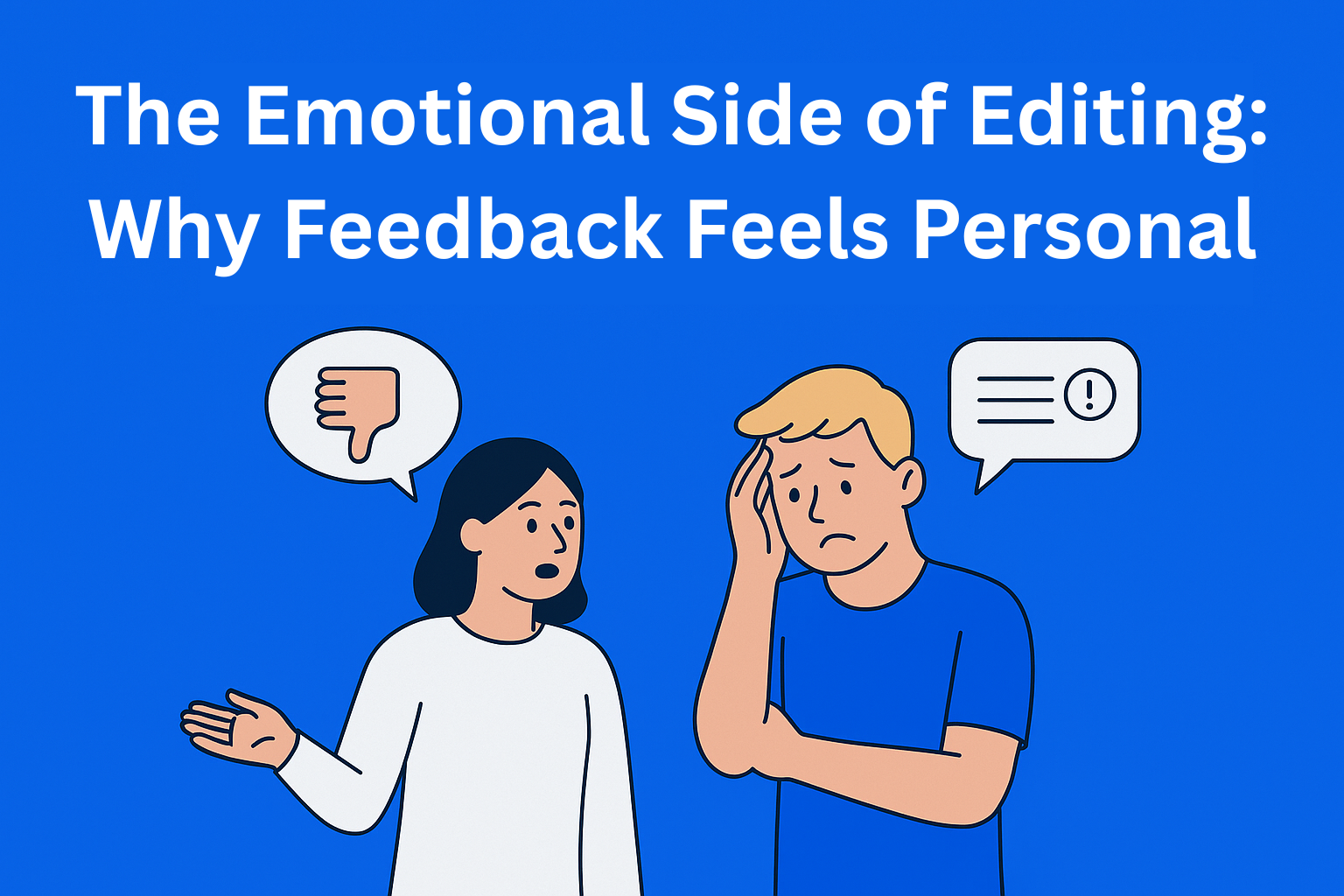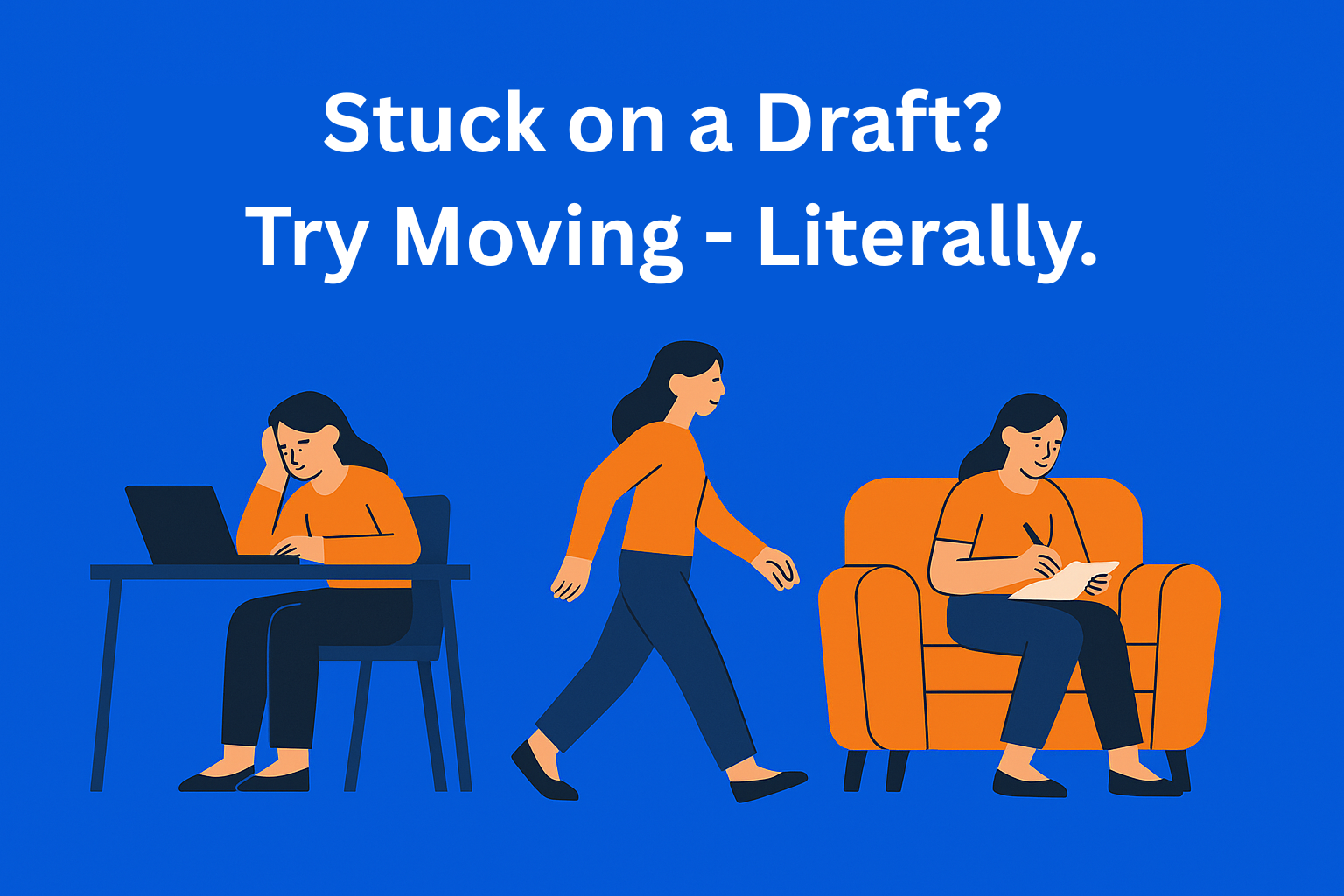The Emotional Side of Editing: Why Feedback Feels Personal (and How to Fix It)
Editing shouldn’t feel like a personal attack. This blog explores why feedback can sting, how team culture shapes reactions, and how to turn revisions into real collaboration instead of conflict.

Writers know the feeling: you finally hit “submit,” proud of the work you just finished - and then comes the feedback. Red lines everywhere. Comments like “Could we rework this section?” or “This part doesn’t quite land.”
Suddenly, it’s not just your writing that feels criticized - it’s you.
Editing is supposed to make content better, but too often, it ends up bruising egos and straining team relationships. The truth is, editing isn’t just a technical process - it’s an emotional one. And if your team doesn’t handle that side of it well, you’re going to have more tension than teamwork.
Let’s break down why feedback hits so hard, and how content teams can turn editing from a personal sting into a shared creative process.
Key Takeaways
- Feedback feels personal because writing is personal - Reframe feedback to target the content, not the writer, to reduce defensiveness.
- Brains resist criticism by default - Regular, early feedback helps normalize revisions as collaboration instead of judgment.
- Timing matters - Late-stage edits feel like attacks. Structured, expected feedback loops prevent emotional backlash.
- Clarity reduces friction - Style guides and documented tone rules shift feedback from opinion to alignment.
- Leadership sets the tone - Empathetic leaders who balance critique with praise build a culture where editing fuels creativity.
Why Feedback Feels Personal
1. Writing is personal
When someone edits your work, they’re not just tweaking words - they’re touching something you created from scratch. Writing takes time, thought, and a bit of vulnerability. Even if it’s “just another blog,” you’re still putting a piece of yourself into it.
That’s why comments like “This needs a rewrite” can sting more than “Let’s fix the headline.” The first feels like a judgment on the writer. The second? A simple task.
The fix: separate the writer from the writing. Feedback should target the content, not the creator. Phrases like “Let’s make this section stronger” work better than “You didn’t explain this well.” Small wording shifts can make a big emotional difference.
2. We’re wired to defend ourselves
It’s not just ego - it’s biology. The human brain treats criticism as a potential threat, triggering a defensive reaction. Even constructive feedback can light up the same areas in your brain that respond to physical pain.
That’s why even a mild “Hmm, not sure this works” can feel like a punch in the creative gut.
The fix: normalize feedback early and often. The more your team treats feedback as a natural part of the process (not a one-time judgment) the less emotionally loaded it becomes. Make edits feel routine, not like a courtroom verdict.
3. Bad timing makes everything worse
No one loves getting hit with a wall of comments five minutes before a deadline. When feedback arrives late, it feels like an ambush - even if it’s valid. Timing turns constructive feedback into chaos.
The fix: build structured feedback loops. In EasyContent, for instance, you can create specific workflow stages for feedback and approval. Everyone knows when their turn comes - no surprises, no midnight rewrites.
When people expect feedback, they’re more open to receiving it.
Creating a Healthier Editing Culture
1. Make it a conversation, not a verdict
Feedback shouldn’t feel like an editor handing down a sentence. It should feel like two creatives working toward the same goal.
Encourage editors to ask questions instead of issuing commands:
- Instead of: “This paragraph doesn’t make sense.”
- Try: “What were you trying to show here? Maybe we can clarify it together.”
That small shift turns tension into teamwork.
2. Build shared understanding through documentation
A lot of emotional friction comes from unclear expectations. When no one knows exactly what “good” looks like, feedback feels random - or worse, inconsistent.
That’s where brand and tone documentation comes in. Use it as your shared reference point so feedback feels objective, not personal. In EasyContent, you can store all your documentation (from voice guidelines to examples of ideal tone) right next to your content.
Now, instead of arguing over opinions, your team can refer back to clear standards.
3. Don’t skip positive feedback
Teams often treat editing as fixing what’s wrong, not celebrating what’s right. But when writers only ever hear criticism, even the best suggestions start to sound harsh.
Editors should balance notes with affirmation - not in a fake “good job!” way, but with specifics:
- “The intro really hooks me - great pacing here.”
- “This example makes the concept super clear.”
That’s not fluff; it’s fuel. Positive reinforcement makes writers more receptive to critical notes later.
4. Separate idea feedback from execution feedback
Sometimes, feedback hits hard because people mix up strategy and style. If an editor challenges the idea behind the content (“Is this topic right for our audience?”), the writer feels like they’re back to square one.
To avoid that, give strategic feedback early - before anyone starts writing. Once the draft begins, feedback should focus on execution (structure, clarity, flow).
That way, edits stay in scope, and writers don’t feel blindsided halfway through.
Leaders: Set the Tone (Literally)
A healthy feedback culture starts at the top. If leaders treat edits like a power move, everyone else will, too. But if they model openness, empathy, and collaboration, that mindset spreads.
Good leaders:
- Give feedback privately when it’s sensitive.
- Praise publicly when it’s earned.
- Encourage editors and writers to discuss changes directly - not through a maze of Slack messages.
And most importantly, they remind the team that editing isn’t about being right - it’s about making the content better.
Tools That Make Feedback Feel Less Personal
You can’t remove emotion from feedback entirely, but you can remove the confusion that amplifies it.
Platforms like EasyContent help by:
- Keeping all comments in one place (no messy email threads).
- Showing revision history, so everyone sees what changed and why.
- Defining roles and steps, so editors don’t overstep and writers don’t feel overridden.
When feedback is clear, contextual, and well-documented, it stops feeling like criticism - and starts feeling like teamwork.
Conclusion
Editing doesn’t have to feel like a battle between writer and editor. When feedback is clear, kind, and process-driven, it becomes something better - collaboration that pushes creativity forward.
So next time you’re about to leave a comment like “Rewrite this,” take a breath. Ask a question instead.
After all, the goal isn’t to prove who’s right - it’s to make something great together. And that’s a process worth protecting.






